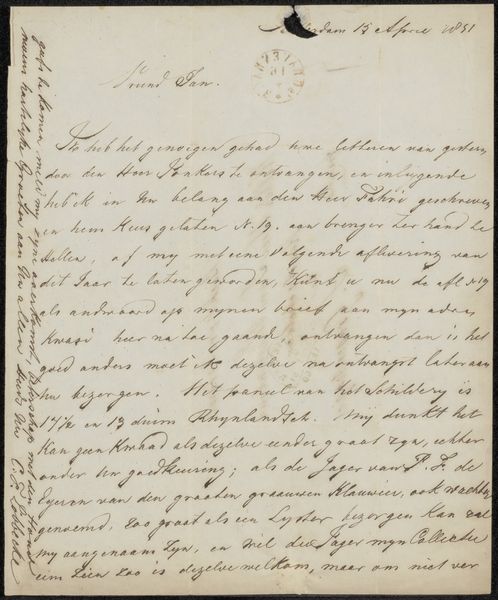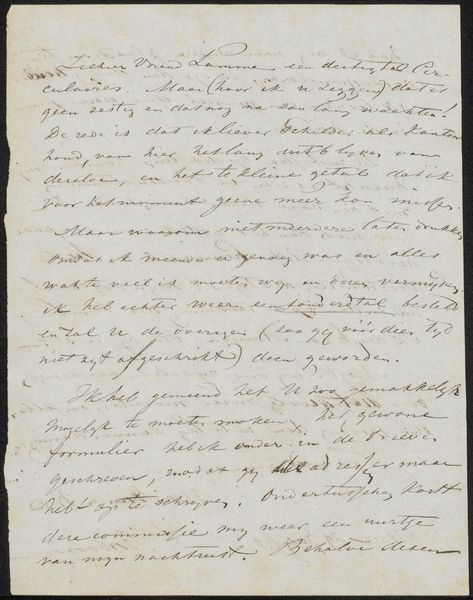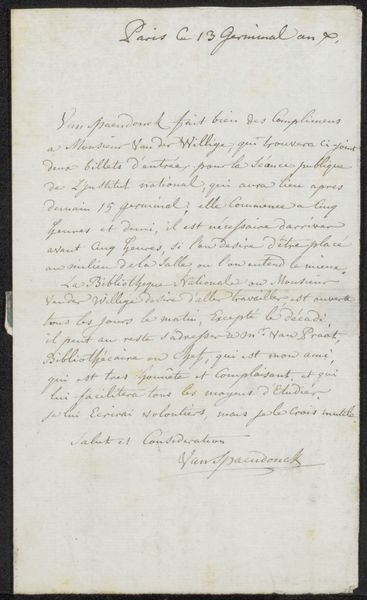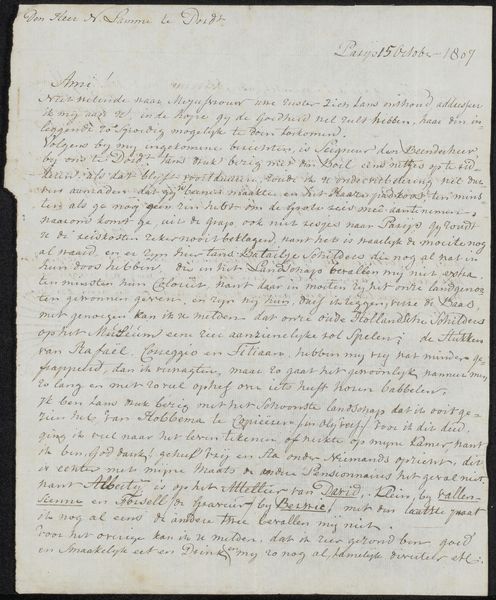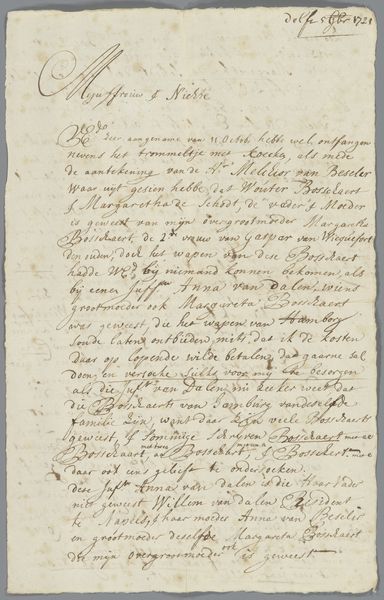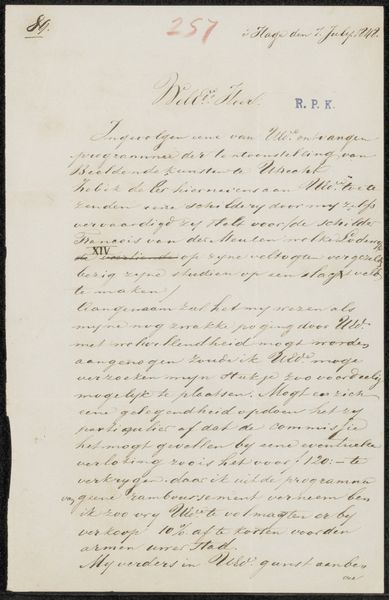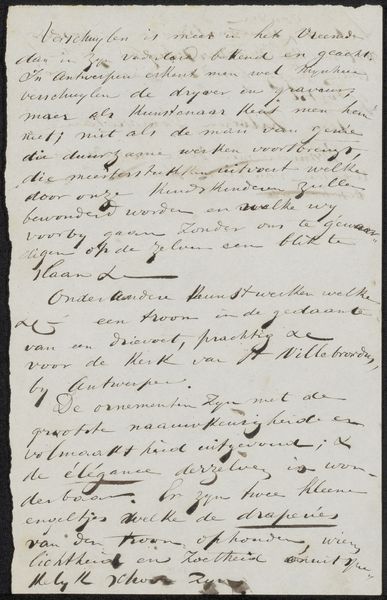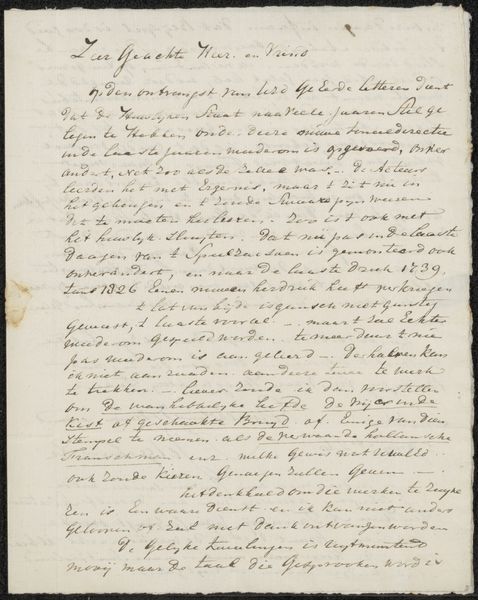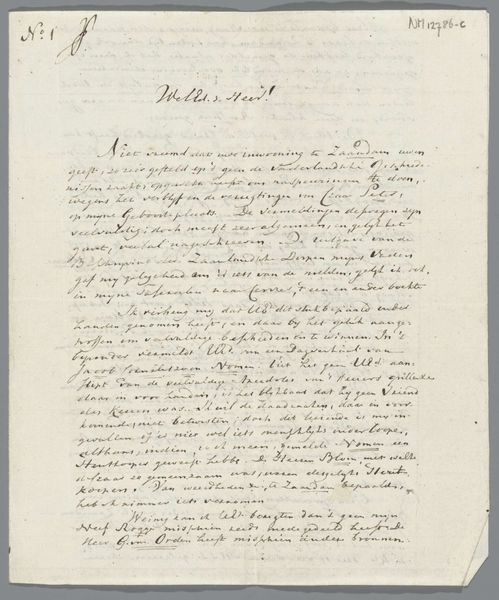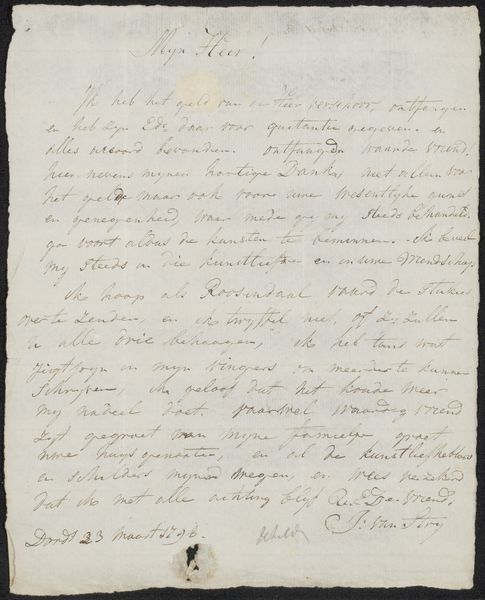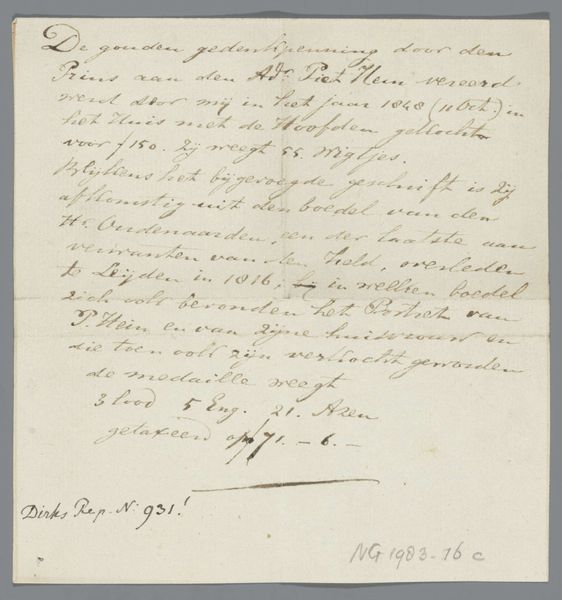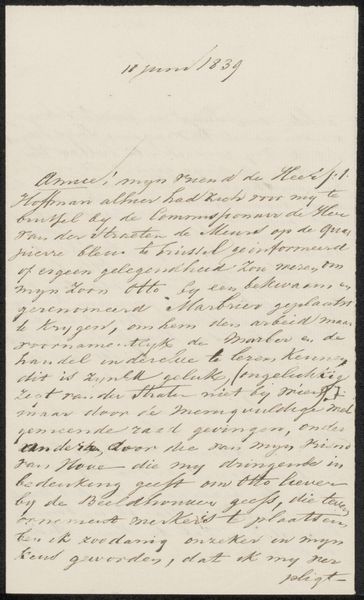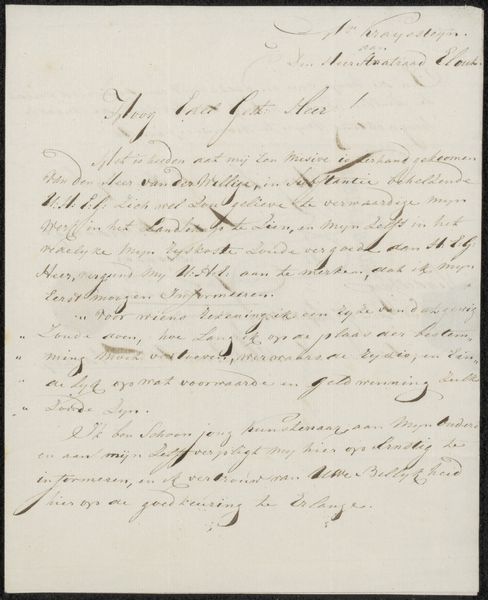
Verklaring van de verkoop van de zeilsteen van Tsaar Peter de Grote aan S. K. Sybrandi en Franse vertaling Possibly 1813 - 1823
0:00
0:00
drawing, mixed-media, print, paper, ink
#
drawing
#
mixed-media
#
dutch-golden-age
# print
#
paper
#
ink
#
calligraphy
Dimensions: length 29.5 cm, width 20.7 cm, length 25.3 cm, width 17.2 cm
Copyright: Rijks Museum: Open Domain
Curator: Here we have “Verklaring van de verkoop van de zeilsteen van Tsaar Peter de Grote aan S. K. Sybrandi en Franse vertaling,” a mixed-media work by J. H. Graswinkel, likely from between 1813 and 1823. It has an official, legal feel to it, a sense of bureaucracy. It makes me wonder what the historical and social implications were behind such a document being created at that specific time? Editor: That’s a great question. How does situating it within the context of early 19th-century Netherlands inform your interpretation? Curator: The Netherlands had just been annexed into the French Empire under Napoleon. The language in the document is both Dutch and French. Considering this, who would create a bilingual document like this, and why? Was this aimed at both a local and perhaps a foreign, possibly French, audience? The sale of an item connected to Tsar Peter the Great adds another layer. This object, likely a rock or stone, would have symbolic power beyond its monetary worth, acting as a token of connection between Russia and the Netherlands, countries whose relations stretched back to the late 17th century. Editor: So the document embodies a moment of cultural and political intersection. What do you think its existence tells us about Dutch society at the time? Curator: Precisely! This document points towards a society grappling with shifting power dynamics. We see Dutch grappling with French Imperial power and needing to legitimize this sale within a framework acceptable to both cultures. It shows how even seemingly mundane transactions are steeped in politics, national identity, and perhaps even resistance. Look closer at that stamp. What do you make of that figure? Is that an act of colonial power being flexed? Editor: I hadn't considered that. So much context is embedded in a simple sale agreement! Curator: Absolutely. And it reminds us that art, even in documentary forms, can be a powerful lens for understanding the complexities of history and power.
Comments
No comments
Be the first to comment and join the conversation on the ultimate creative platform.
